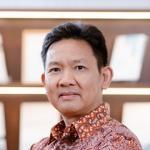
This article is published in collaboration with the Economic Research Institute for ASEAN and East Asia.
All countries are committed to pursuing pathways to decarbonize emissions by 2050, amid concerns raised by the Intergovernmental Panel on Climate Change over the serious consequences of climate change. The Paris Agreement, a legally binding international treaty on climate change, set the goals to hold "the increase in the global average temperature to well below 2°C above pre-industrial levels" and pursue efforts "to limit the temperature increase to 1.5°C above pre-industrial levels."
Pursuing net-zero emissions requires political commitment to drive policies in all energy-related sectors to transform business-as-usual energy infrastructure to clean and sustainable energy infrastructure, with clean fuels and renewables playing key roles. The scaling up of all clean and renewable technologies and production requires a massive amount of rare earth minerals or rare earth elements (REE) as critical input in the production of all clean technologies and renewables, such as wind turbines, battery storage, and batteries in electric vehicles, electrolyzers, and all smart technologies involved in smart grids and telecommunications. Rare earth elements are also used in the production of military weapons.
Growing demand
To meet the net-zero emission scenario, demand for critical minerals is estimated to grow sixfold to 42.3 metric tonnes in 2050 from 7.1 metric tonnes in 2020. This jump in demand raises concerns over energy security in the global sourcing supply chain, dominated by the People's Republic of China (PRC), according to the International Energy Agency.
The PRC is the biggest global rare earth player in terms of mine production and reserves of rare earth elements, with 44 million tons in reserves (representing about 35% of global reserves) and 140,000 tons of annual mine production. The United States is second, having re-opened mining in 2018, and gradually increased production to 38,000 tons in 2021, with 1.5 million tons in reserves. Australia ranks third with annual production of 17,000 tons and about 4.1 Mt in reserves. Viet Nam and Brazil have the second and third most reserves with 22 million tons and 21 million tons, respectively, but their mine production is among the lowest at only 1,000 tons per year each (USGS, 2022).
The PRC has a strong foothold in the global supply chain, accounting for 80%-85% of global supply, with the US heavily dependent on the East Asian county for about 80% of its rare earth imports. Security of supply is an issue, underlining the need to develop new sources of rare earths in North America and elsewhere, such as Australia, Viet Nam, and Indonesia.
Prior to the 1980s, the US held a majority stake in the rare earth elements market, but that changed as production growth abroad, mounting environmental pressures at home, and cheaper labor shifted production overseas.
There are a few players in the global rare earth element supply chain. Recognizing the importance of supply chain security, the US has made several attempts to re-emerge as a major player. This has seen renewed focus under the Joe Biden administration, with massive investments in climate change technology, and a hard line being taken on geopolitical rivalries.
New supply chain sources
As a result, Australia, Indonesia, Viet Nam, and India could be new supply chain sources in the near future. Australia’s resources sector is well positioned to develop a cost-competitive domestic processing sector which meets environmental, social, and governance considerations. This includes drawing on high labor and environmental standards, reliability as a supplier, and technical expertise to drive production efficiency. Its high standards and strong resources record give Australia a major advantage in the global critical minerals market. However, Australia, Indonesia, and Viet Nam will all need to address barriers facing miners and processors, including skills and expertise to meet the technical challenges of production, processing and refining, and managing the sustainability of the critical minerals industry.
It is important for the governments of these three countries to look into issues which can help de-risk projects at all stages of development to overcome barriers and attract private investment. This can be done through project facilitation, providing technical support, and making strategic investments to scale up processing and lock in finance and offtake for production. There is a need to invest in research and development (R&D) for this sector to grow, just as the PRC did for decades through its own R&D investment.
Finally, it is crucial to build relationships with key countries other than the PRC for securing supplies; such as the United States, Japan, the Republic of Korea, the United Kingdom, India, and European Union members to secure off-take contracts of these critical minerals.
This article was fist published by the Economic Research Institute for ASEAN and East Asia on 17 June 2023.
 Han Phoumin
Han Phoumin
Senior Energy Economist
Economic Research Institute for ASEAN and East Asia
Han Phoumin has more than 20 years of professional experience working at various international and inter-governmental organizations and multi-disciplinary research consortiums related to energy market and technologies, environment, integrated water resource management, governance, and economic development in ASEAN and East Asia. He specialized in economic development and policy and applied econometrics. Much of his career in the past 12 years revolved around the power sectors, especially with sustainable hydropower development, renewable energy policy research (i.e., biomass power generation competitiveness studies, solar and wind), energy efficiency and conservation, clean coal technology, energy security, and energy demand and supply forecasting. He has been serving as an expert for APEC on energy security for oil and gas emergency responses since 2013 until now. In 2022, he joined Elsevier as a member of the international advisory board for energy policy.


